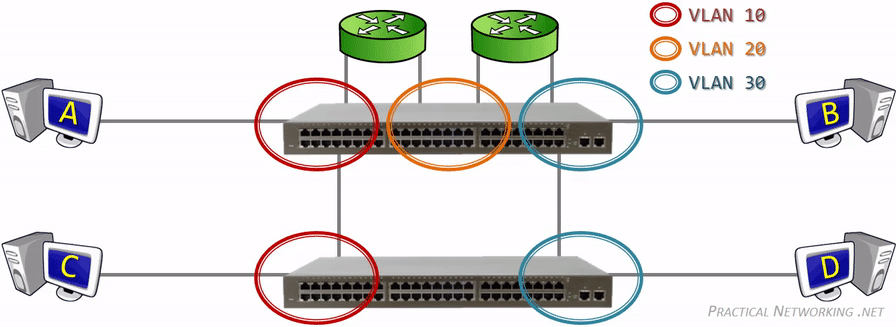In today’s interconnected world, computer networks have become the backbone of organizations, enabling seamless communication and data sharing. However, managing and securing these networks can be a complex task. This is where VLANs (Virtual Local Area Networks) come into play. VLANs provide a powerful mechanism for network segmentation, allowing organizations to enhance security, optimize network performance, and streamline network management. In this article, we will explore the concept of VLANs and discuss their importance in modern network infrastructures.
What is a VLAN?
A VLAN is a logical grouping of devices on a network, regardless of their physical location. It enables network administrators to create multiple virtual networks within a single physical infrastructure, effectively segmenting the network. Each VLAN behaves as if it were a separate physical network, even though the devices within a VLAN may be physically dispersed.

Importance of VLANs
- Enhanced Network Security: By dividing a network into smaller VLANs, organizations can implement stricter access controls and isolate sensitive data or critical systems. VLANs prevent unauthorized access by separating traffic and allowing administrators to define specific rules and policies for each VLAN. If an attacker gains access to one VLAN, they are still isolated from other VLANs, minimizing the potential for lateral movement and reducing the overall attack surface.
- Improved Performance and Bandwidth Management: VLANs enable network administrators to prioritize network traffic based on the requirements of different applications or departments. By segregating traffic into separate VLANs, network congestion can be minimized, ensuring that critical applications receive the necessary bandwidth. This improves overall network performance and helps maintain a consistent user experience.
- Simplified Network Management: Large networks with numerous devices can be challenging to manage and maintain. VLANs simplify network administration by allowing administrators to logically group devices based on department, function, or location. This logical grouping makes it easier to manage network configurations, apply updates, and troubleshoot issues, as changes within one VLAN do not affect others. VLANs also facilitate network scalability, as new devices can be easily added to the appropriate VLAN without disrupting the entire network.
- Facilitates Compliance and Regulatory Requirements: Many industries have specific regulatory requirements regarding data privacy and security. VLANs can aid in compliance efforts by providing network segmentation, isolating sensitive data, and restricting access based on established regulations. By leveraging VLANs, organizations can simplify the process of complying with industry standards such as the Payment Card Industry Data Security Standard (PCI DSS) or the Health Insurance Portability and Accountability Act (HIPAA)
- Flexibility and Adaptability: VLANs are not limited to physical boundaries. They can be extended across different network devices, such as switches, routers, or wireless access points, allowing for greater flexibility in network design. Additionally, VLANs can be reconfigured or modified as organizational needs evolve, making them highly adaptable to changing requirements and network expansion.
Conclusion
Virtual Local Area Networks (VLANs) provide an invaluable tool for network administrators to optimize network performance, enhance security, and streamline network management. By dividing a network into smaller logical segments, VLANs enable finer control over access, bandwidth allocation, and network administration. Organizations can benefit from improved security, simplified compliance, better performance, and increased flexibility. As network infrastructures continue to grow in complexity, implementing VLANs becomes increasingly essential to ensure efficient and secure network operations.
